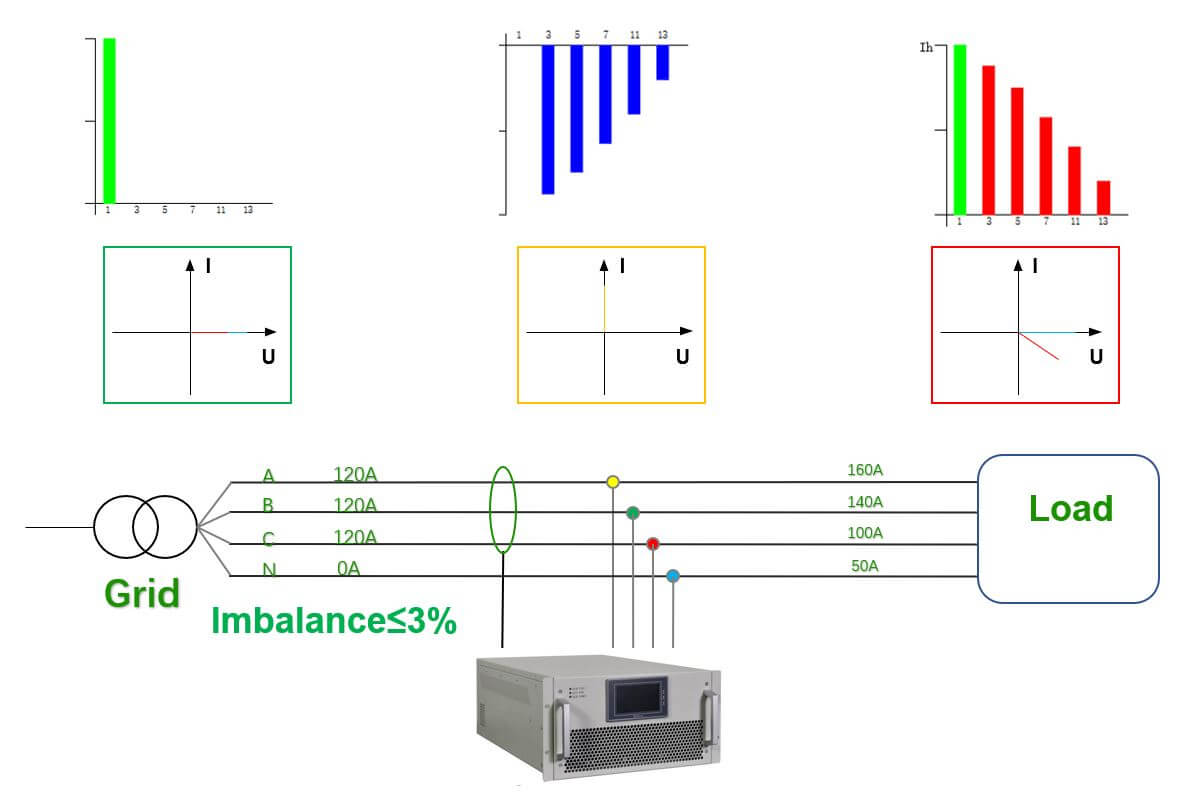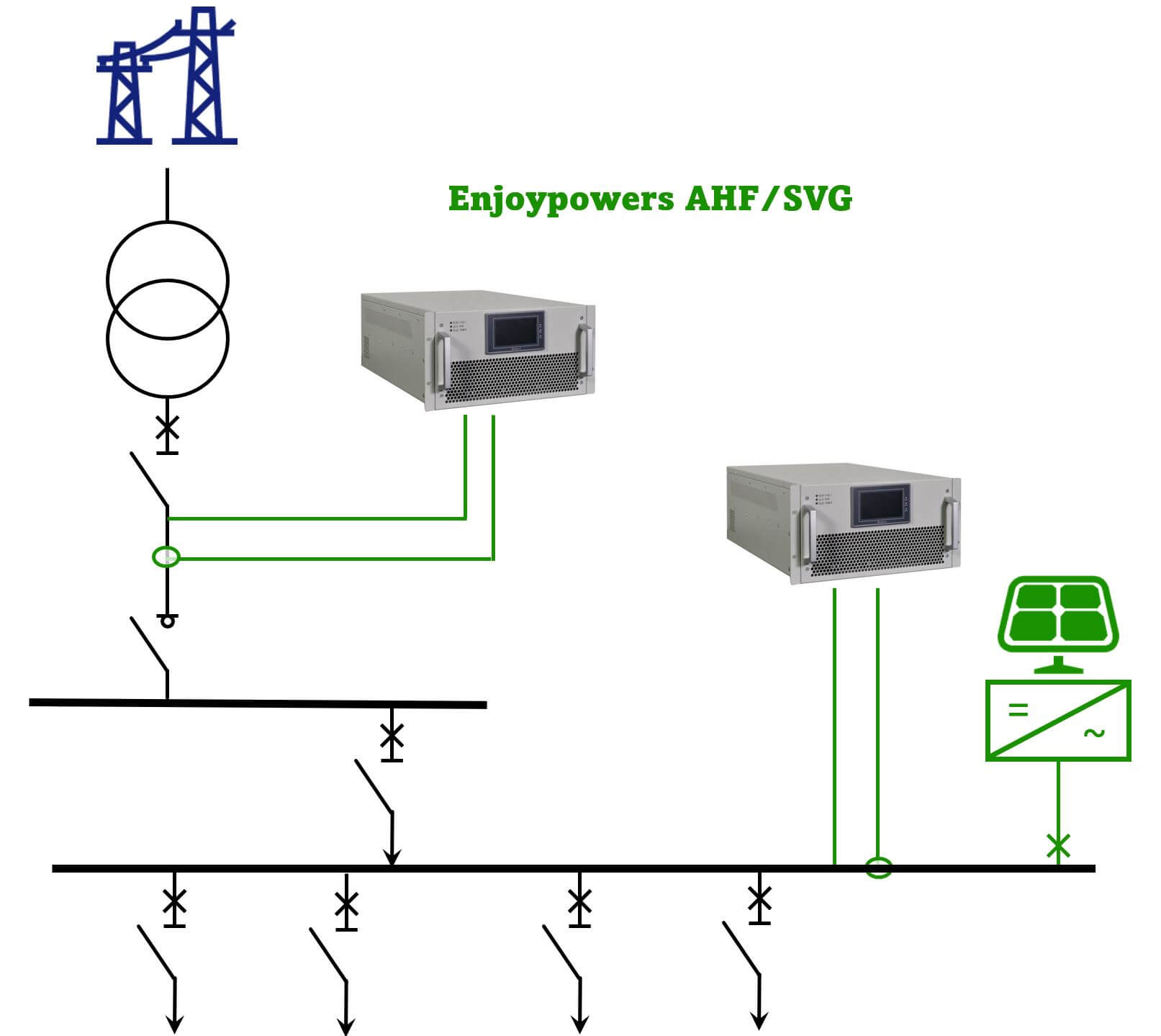Table of Contents
Summary
This article introduces a case of the power quality problem after photovoltaic installation, which leads to the frequent blowing of the fuse in the reactive power compensation cabinet and the frequent tripping of the main circuit breaker switch, analyzes the reasons for this phenomenon, and provides the harmonic elimination and power factor correction solution of Enjoypowers.
Background
The metal processing plant has a 1000kVA transformer, 30% of the load is high-frequency heating equipment, the active power of the electrical load is 500-600kW, and there is a 300kvar reactive power compensation cabinet, the monthly average power factor is above 0.9, and the system is running normally.
Phenomenon
After installing photovoltaics, the power factor dropped to 0.8, the fuses in the reactive power compensation cabinet were often blown, the capacitors were often damaged, and the main circuit breaker was frequently tripped.
In order not to affect the production, the customer’s electrician replaced the 63A fuse in the compensation cabinet with 100A. Although the fuse was not damaged, it caused damage to the capacitor and tripping of the main switch. Eventually, the power consumption of the entire plant was affected.
Finally, in order to continue production, the customer closes the reactive power compensation cabinet and exits, resulting in a continuous decrease in power factor.
Analyze
After receiving the customer’s consultation, Enjoypowers sent engineers to the site to investigate and found that the reactive power compensation cabinet is pure capacitive compensation, the rated current of the capacitor is 43A, and the current in actual operation reaches 86A.
After the photovoltaic system is connected, resonance occurs with the high-frequency heating equipment system, the 11th and 13th harmonics are seriously amplified, the THDi rises from the original 18% to 43%, and the harmonic voltage is as high as 15%. After a few minutes of operation, the main short-circuit switch has a high temperature alarm.
Solution

After finding the cause, Enjoypowers provide the harmonic elimination and power factor correction solution:
1. Add SVG, and use capacitors with harmonic elimination reactors to form a set of hybrid compensation scheme with a capacity of 530kVar;
2. Add a 200A active harmonic filter in front of the high-frequency heating equipment.
Special attention: In the case of harmonics, a simple capacitor cannot be used, but a capacitor with a harmonic elimination reactor is used to avoid resonance.
After the implementation of the solution, the monthly average power factor of the enterprise has reached more than 0.95, and there is no phenomenon such as switch tripping, which ensures the normal production of customers.
Summarize
In this project, photovoltaics do not generate harmonics, but the customer’s load and pure capacitive compensation scheme lead to the occurrence of harmonic resonance.

About Enjoypowers
Professional people do professional things.
Since many customers did not correctly perform the feasibility study of the photovoltaic system before installing the photovoltaic system, various power quality problems will occur after the photovoltaic system is installed, including frequent disconnection of switches, frequent burning of capacitor compensators, and even low power factor penalty.
Enjoypowers is a top power quality supplier in China. Its products are widely used in photovoltaic system sites and have rich experience in the impact of photovoltaic systems on power quality and solutions.
If you are facing power quality issues in your photovoltaic system, the Enjoypowers team is happy to assist you in analyzing the problem, solving it, and implementing a power quality solution that exactly meets your requirements.
For this, please send us your application data and contact me: [email protected].

